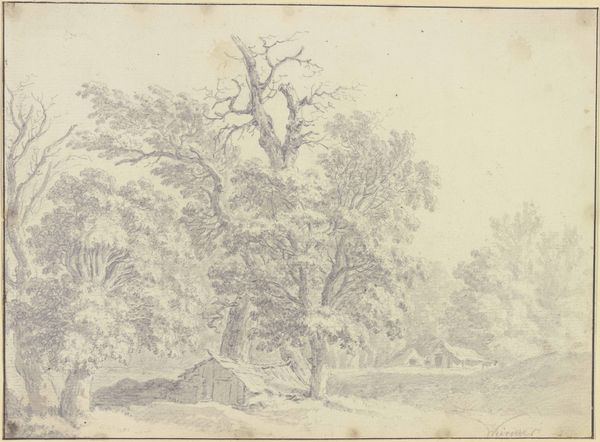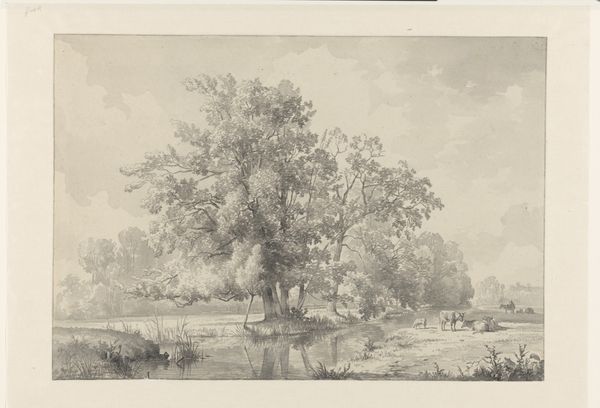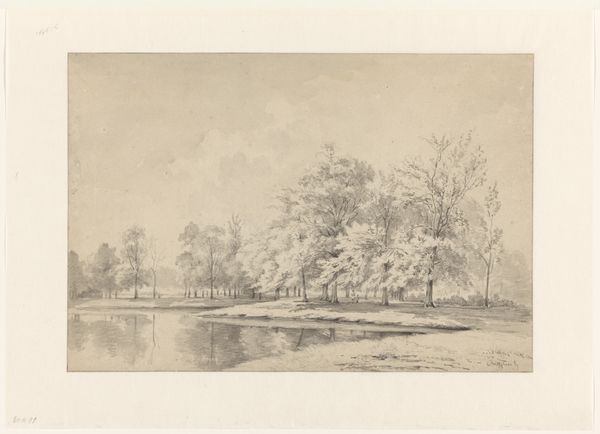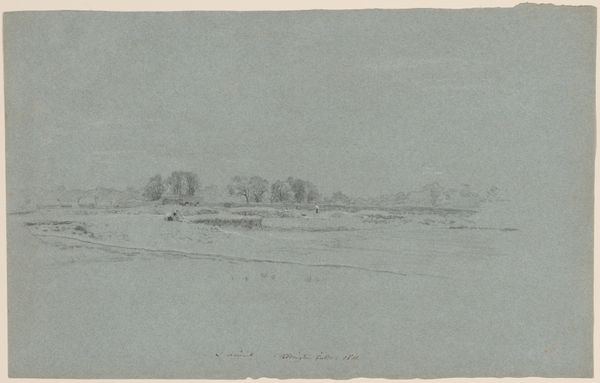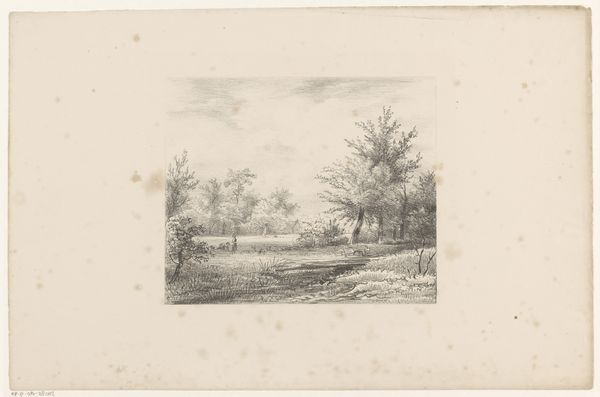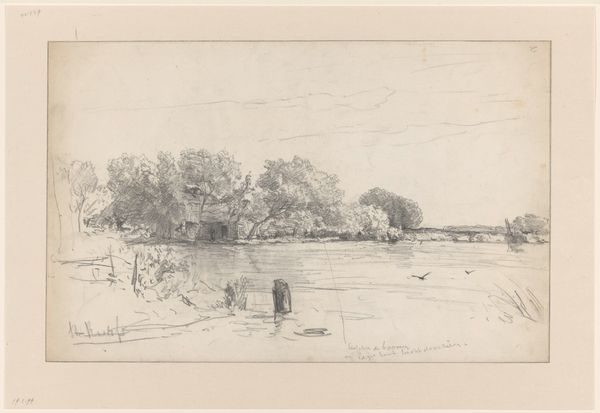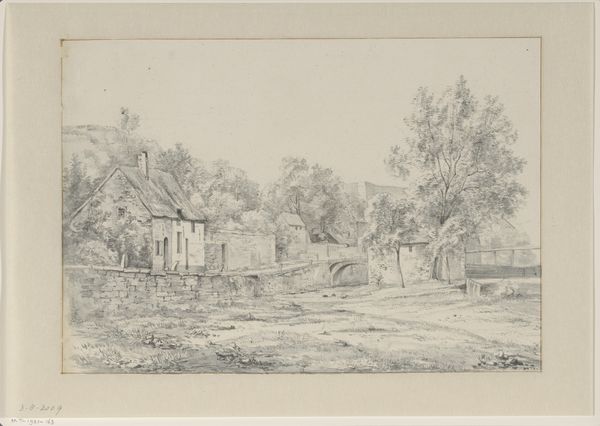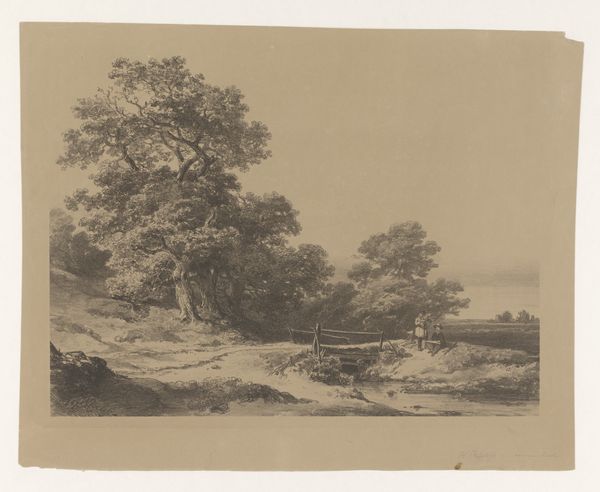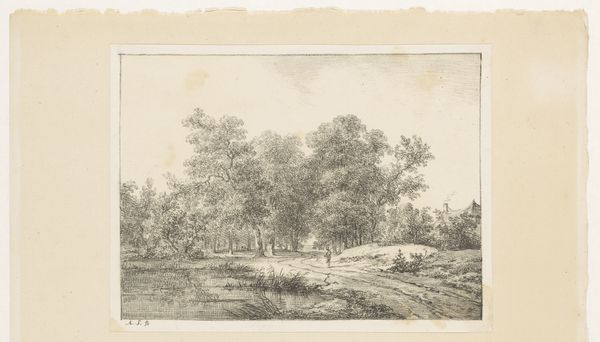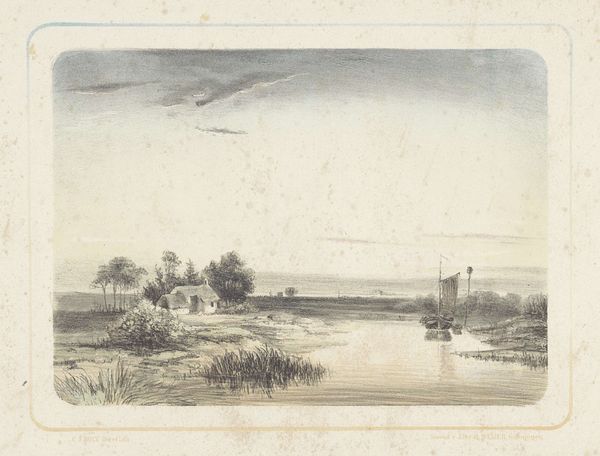
drawing, pencil
#
drawing
#
landscape
#
pencil
#
hudson-river-school
#
line
#
realism
Dimensions: sheet: 31.7 × 45.5 cm (12 1/2 × 17 15/16 in.)
Copyright: National Gallery of Art: CC0 1.0
Editor: Here we have James Renwick Brevoort's pencil drawing, "Farmington, Connecticut," created in 1865. It's such a delicate landscape. What strikes me most is the way he uses light and shadow to suggest depth and atmosphere. What do you see in this piece? Curator: Well, for me, this drawing is so evocative of the cultural moment in which it was created. Think about 1865: the end of the American Civil War. Artists, and the public, were really grappling with the identity of the nation and reflecting on an imagined idyllic past. Brevoort, trained in the style of the Hudson River School, offers a vision of peaceful, rural America. Doesn't this composition remind you of pastoral poems? Editor: I do see what you mean. It does feel nostalgic. Was there an element of promoting westward expansion within the art and media of this time? Curator: Absolutely. Landscape imagery often served to encourage settlement. Artists received patronage through publications and, importantly, by commissions of those shaping and benefiting from land policies and exploitation of natural resources. Ask yourself, who do you think the intended audience was for works such as this? And what political functions could such works play? Editor: That's fascinating to consider. It wasn’t just art for art's sake but something with an implicit bias. I appreciate learning more about the socio-political undertones in landscape art from this period. Curator: It's vital to look at art as part of wider society. Consider how it mirrors, shapes, and is shaped by its culture. Looking at 'Farmington, Connecticut' through that lens reveals quite a bit about America's hopes and realities in 1865.
Comments
No comments
Be the first to comment and join the conversation on the ultimate creative platform.

